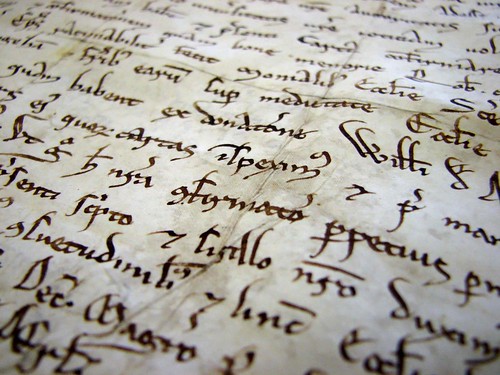
Any one know of a farm with a front row seat in this ring? The Hadron collider is back in the news, not with the story of the resumption of activities geared to a new go at the experiment "27 km-long tunnel in which proton beams will collide at high speed, simulating the creation of the first particulate matter in effect, the creation of the universe itself".
No its this news:
particle collider suspected of terrorist links
Friday, October 9, 2009 CBC News
I figure the story is a distract from the real news which is harder to understand, yet no less gripping:
"In addition to the Higgs boson, other theorized novel particles that might be produced, and for which searches are planned, include strangelets, micro black holes, magnetic monopoles and supersymmetric particles.
Technical Design
The collider is contained in a circular tunnel with a circumference of 27 kilometres (17 mi) at a depth ranging from 50 to 175 metres underground. The tunnel, constructed between 1983 and 1988, was formerly used to house the LEP, an electron-positron collider.
The 3.8 metre diameter, concrete-lined tunnel crosses the border between Switzerland and France at four points, although most of its length is inside France. The collider itself is underground, with surface buildings holding ancillary equipment such as compressors, ventilation equipment, control electronics and refrigeration plants.
The collider tunnel contains two pipes, each pipe containing a beam. The two beams travel in opposite directions around the ring. 1232 dipole magnets keep the beams on their circular path, while additional 392 quadrupole magnets are used to keep the beams focused, in order to maximize the chances of interaction between the particles in the four intersection points, where the two beams will cross. In total, over 1600 superconducting magnets are installed, with most weighing over 27 tonnes. 96 tonnes of liquid helium is needed to keep the magnets at the operating temperature.
The protons will each have an energy of 7 TeV, giving a total collision energy of 14 TeV. It will take less than 90 microseconds for an individual proton to travel once around the collider. Rather than continuous beams, the protons will be "bunched" together, into 2,808 bunches, so that interactions between the two beams will take place at discrete intervals never shorter than 25 ns apart. When the collider is first commissioned, it will be operated with fewer bunches, to give a bunch crossing interval of 75 ns. The number of bunches will later be increased to give a final bunch crossing interval of 25 ns.
Prior to being injected into the main accelerator, the particles are prepared through a series of systems that successively increase the particle energy levels. The first system is the linear accelerator Linac 2 generating 50 MeV protons which feeds the Proton Synchrotron Booster (PSB). Protons are then injected at 1.4 GeV into the Proton Synchrotron (PS) at 26 GeV. Finally the Super Proton Synchrotron (SPS) is used to increase the energy of protons up to 450 GeV.
The LHC will also be used to collide lead (Pb) heavy ions with a collision energy of 1,150 TeV. The ions will be first accelerated by the linear accelerator Linac 3, and the Low-Energy Injector Ring (LEIR) will be used as an ion storage and cooler unit. The ions then will be further accelerated by the Proton Synchrotron (PS) and Super Proton Synchrotron (SPS) before being injected into LHC ring, where they will reach an energy of 2.76 TeV per nucleon. Six detectors are being constructed at the LHC, located underground in large caverns excavated at the LHC's intersection points. Two of them, ATLAS and CMS, are large, "general purpose" particle detectors.
ALICE is a large detector designed to study the properties of quark-gluon plasma looking at the debris of heavy ion collisions. The other three (LHCb, TOTEM, and LHCf) are relatively smaller and more specialized. A seventh experiment, FP420 (Forward Physics at 420m), has been proposed which would add detectors to four available spaces located 420m on either side of the ATLAS and CMS detectors.
The size of the LHC constitutes an exceptional engineering challenge with unique safety issues. While running, the total energy stored in the magnets is 10 GJ, while each of the two beams carries an overall energy of 362 MJ. For comparison, 362 MJ is the kinetic energy of a TGV running at 157 km/h (98 mph), while 724 MJ, the total energy of the two beams, is equivalent to the detonation energy of approximately 173 kilograms (380 lb) of TNT, and 10 GJ is about 2.4 tons of TNT. Loss of only 10-7 of the beam is sufficient to quench a superconducting magnet, while the beam dump must absorb an energy equivalent to a typical air-dropped bomb.
These immense kinetic energies become far more spectacular when you consider how little matter is carrying it. At its maximum energy rating (2.76TeV per particle with a total of 362MJ), there is just 1.15E-9 grams of hydrogen in the system (or 0.026 of one cubic millimeter)". here



No comments:
Post a Comment